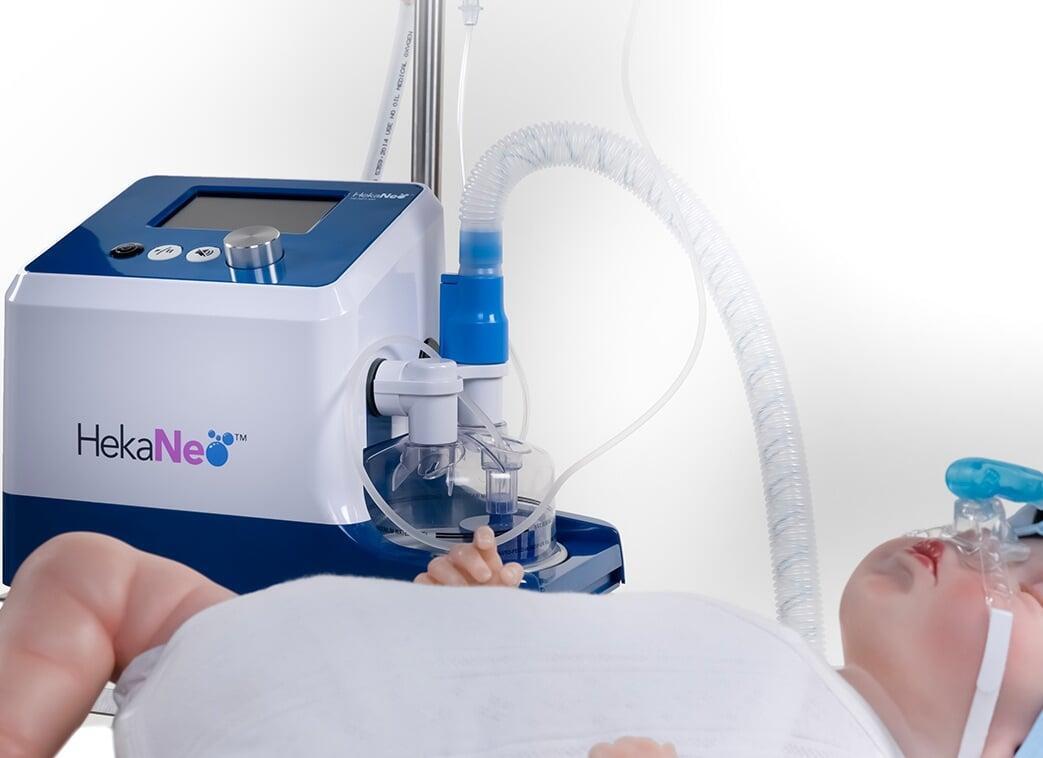What is HekaNeo
The HekaNeo HM-NEO-650 is a bubble CPAP system for the treatment of newborns with Neonatal respiratory distress Syndrome (NRDS). It delivers warmed and humidified respiratory gases through two primary modes: Bubble CPAP/NCPAP mode and High Flow Nasal Cannula (HFNC) mode.
Bubble CPAP/ NCPAP Mode: Delivers a constant and adjustable flow rate (4-15 L/min) and PEEP (3-10cmH2O) (achieved through an underwater seal) to the infant’s lungs via nasal prongs or a mask. This mode helps keep airways open during exhalation, improving oxygenation and reducing the work of breathing for infants with conditions like Respiratory Distress Syndrome (RDS) or other breathing difficulties.
What is HekaFlo
Why choose HekaFlo

Flow Rate
HekaFlo HM-P-500 generates gas flow rates up to 60 L/min.

O2 Blender
Electronic air-O2 blender achieves escalation of FiO2 from 21% to 100%.

Humidifier
Humidifier saturates the gas mixture at temperature of 31 to 37 C.

Large Touch Screen
4.3-inch TFT touch screen, which allows quick operation by touch and ease of use.

WiFi & Bluetooth
Wi-Fi and Low energy Bluetooth module for wireless connectivity.

IoT Enabled
World’s first IoT enabled HFNC device in the market.

Remote Monitoring
Web based dashboard and native iOS and Android apps for remote patient monitoring.

Integrated Pulse Oximeter
Integrated pulse oximeter to report the SpO2 and pulse rate values.

Different Modes
Adult mode and Pediatric mode with pre-defined range for flow rate.

AI Driven Reports
Artificial Intelligence (AI) driven reports & charts to evaluate patient conditions.

Built-in Calculators
HekaFlo has built-in flow meter and ROX index Calculator.

Safe & Comfortable
Ultra-quiet blower, soft & comfortable nasal cannula and built-in system alerts.
Key benefits of HekaFlo oxygenation therapy
The flow rate for traditional oxygen therapy is up to 15 liters per minutes and HFNO based high flow oxygen therapy is up to 60 L/min. According to American Journal of Respiratory and Critical Care Medicine, this newer mode of delivering supplemental oxygen at high flows (40–60 L/min) permits high FiO2; the gas is heated and humidified to avoid mucosal injury and patient discomfort, overcoming the key problems of past use of high flow rates.








